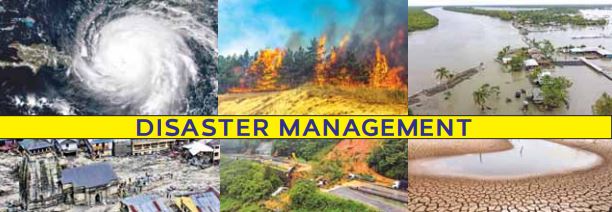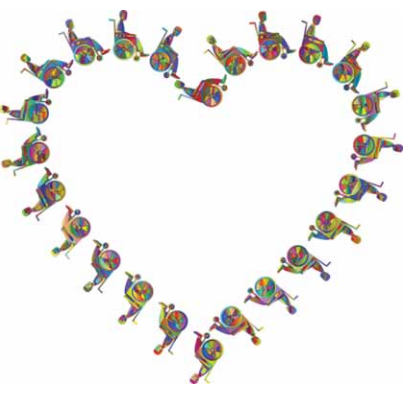Shaktisagar Dhole serves as the District Disaster Management Officer in the Solapur district of Maharashtra.
Disasters, both natural and man-made, pose significant risks to communities worldwide. As the frequency and severity of these events increase, there is an urgent need for effective disaster risk sensitization and reduction strategies. Augmented Reality (AR) and Virtual Reality (VR) are emerging as powerful tools in this arena, offering innovative ways to educate, prepare, and protect communities from disasters.
Enhancing Disaster Risk Sensitization
Interactive Education and Training: AR and VR technologies are revolutionizing disaster risk education by providing immersive and interactive learning experiences. These advanced tools can simulate disaster scenarios, allowing individuals to experience the impact of such events in a controlled environment. For instance, VR can recreate realistic simulations of earthquakes, floods, thunderstorm or fires etc… enabling people to grasp the severity of these occurrences and understand the critical importance of preparedness.
Community Awareness Programs: AR applications can significantly enhance community awareness campaigns by overlaying vital information about disaster risks in real-time. For example, AR can depict flood-prone areas in a neighbourhood, enabling residents to visualize the potential impact on their homes. This visual and interactive approach proves more effective than traditional methods, as it engages people directly and makes the information more relatable and memorable.
School Safety Programs: Integrating AR and VR into school curriculums can educate children about disaster risks from a young age. Interactive simulations can teach students about the causes and effects of various disasters, proper safety measures, and emergency response protocols. This early education fosters a culture of preparedness and resilience in future generations, equipping them with the knowledge and skills necessary to navigate potential disasters.
Facilitating Disaster Risk Reduction
Risk Assessment and Planning: AR can aid in disaster risk assessment and planning by providing real-time data and visualizations. Emergency managers shall use AR to overlay hazards, hazard maps, infrastructure vulnerabilities, and evacuation routes onto real-world views also this kind of virtual risk & virtual planning has to be experienced by volunteers and common citizens as well. This integrated approach helps in identifying potential risks and developing more effective mitigation strategies and build a Disaster Resilient community ensuring a comprehensive and proactive approach to disaster management.
Viz. – Crowd Management, – At Religious Mass Gatherings, there is always a mind set or can be said as a prejudice that since so many years its running smoothly then why there is a need of Disaster Management considered why worries!
These guys also the officials who are facing first time this kind of situation’s can be realised. The crowd actually crowd is not disaster but there are certain factors which may create a disaster so there is need to be sensitised about crowd associated Disasters to realistically identify the risk and to accelerate the planning in the way to mitigate the crowd associated Hazards. That means Realising the Actual Risk without being in the Risk.
Emergency Response Training: VR can be used to train volunteers, citizens, emergency responders in realistic, high-pressure scenarios without the risks associated with live drills. Flood, Crowd Associated Hazards, Lightning Safety, Firefighters, paramedics (CPR), and Disaster Tourism; other first responders can practice their skills in a variety of simulated disaster environments. This training improves their ability to respond effectively and safely during actual emergencies.
Viz.- while there is a need of CPR to be given to victim but the confidence of responder needs to be built up to handle such situation. As whenever a common volunteer responding to a victim who is in need to give a CPR, he can’t handle the body of victim to treat with CPR. So, the frequent demonstration volunteer, citizen or first responder or emergency officer builds a confidence to handle that situation swiftly.
Case Studies and
Applications
Flood Preparedness in the Netherlands: The Netherlands, a country prone to flooding, has employed AR to educate its citizens about flood risks. AR applications allow residents to see how high-water levels could rise in their areas, encouraging proactive measures like flood-proofing homes.
Earthquake Preparedness in Japan: In earthquake-prone Japan, VR is used to simulate earthquake experiences, teaching people how to react during such events. These simulations include instructions on securing furniture, taking cover, and finding safe evacuation routes.
Conclusion
AR and VR offer transformative potential in disaster risk sensitization and reduction. By providing immersive, interactive experiences, these technologies can enhance education, training, and preparedness efforts, ultimately saving lives and reducing the impact of disasters. As AR and VR continue to evolve, their integration into disaster risk management strategies will become increasingly vital, offering new avenues for building resilient communities. Use of this technology in disaster risk reduction domain will justify the Hon. PM sirs 10-point agenda of Disaster Risk Reduction, “Point no. 5- Leverage technology to enhance the efficiency of Disaster risk management efforts”.
Disaster Mitigation Proposal – Disaster awareness & sensitizing hazards through 6 hazard scenario modules of AR VR module has been submitted to a Maharashtra Government by me
- Crowd Management- There is a religious gathering at Pandharpur in Solapur district the ritual so mass gathering is 700-800 old. Though the crowd is not notified Disaster by government either Govt. of India or state Govt. of Maharashtra there are hazards associated with mass gathering which may trigger bigger disaster so that a need to develop an AR VR module to realise the crowd associated Disaster for religious mass gathering.
- Flood – for Solapur district there are 100 + drowning cases are noted (accidental and flood) so it’s important to sensitize the community about the risk while driving disaster tourism and flash flood.
- CPR training – giving a CPR to victim is not a simple / easy task to perform as the victim is almost a dead body and handling / touching a dead body that need a daring (through lens of volunteer non-medico professional) so the need practice so with AR VR it can be realistic like really handling a victim
- Lightening safety- thunderstorm virtual scene can be generated so the realistically volunteer, community will be trained for to take precaution from being vulnerable to lighting. As there a no rigid structural measure so far through which Indian Farming community could have umbrella for lightning safety.
- Fire safety – fire can be ignited with favourable conditions and with a minor human error so, to avoid error and fire has to be realised to the vulnerable group to being safe with avoiding errors.






